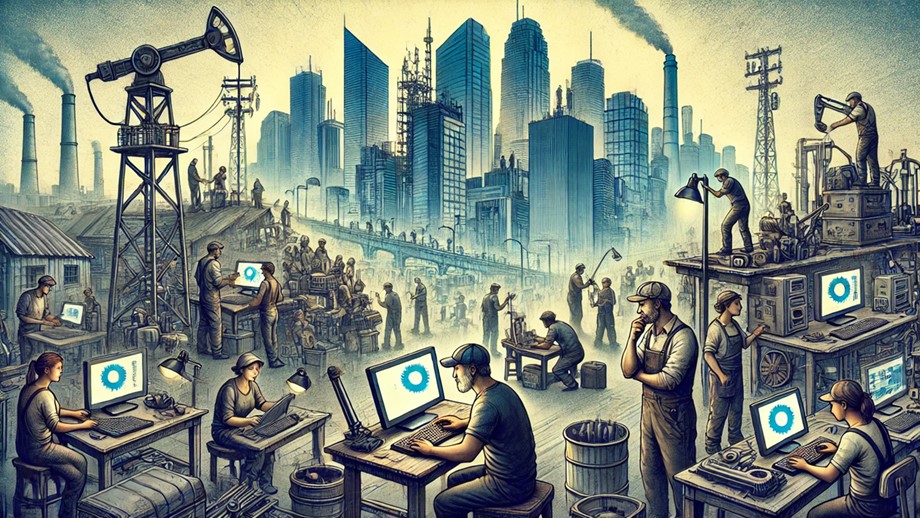The rapid rise of generative artificial intelligence (GenAI) is already reshaping industries across the globe, with many fearing job losses as technology becomes more integrated into the workforce. But while much of the discussion has focused on high-income nations, a new report titled “Buffer or Bottleneck? Employment Exposure to Generative AI and the Digital Divide in Latin America” highlights how the digital divide in developing economies could influence the way GenAI impacts the labor markets. The study, published by the International Labour Organization (ILO) and the World Bank, examines the exposure of Latin American workers to the transformative potential of GenAI.
Unequal Exposure: Who Is Most at Risk?
The study reveals that between 30 percent and 40 percent of employment in the Latin America and Caribbean (LAC) region is exposed to GenAI in some form. However, this exposure is not evenly distributed. The report finds that workers in urban areas, those with higher education levels, and those employed in formal, higher-income jobs are more likely to come into contact with this technology.
The finance, insurance, and public administration sectors are particularly at risk of automation, with younger workers facing the highest levels of exposure. Surprisingly, it’s not just the low-skilled jobs that are being affected. Many high-skilled positions, such as those in education and health services, are also seeing increased interaction with GenAI, although the focus is more on augmenting rather than replacing tasks.
Automation is expected to affect only a small fraction of jobs—between 2 percent and 5 percent—but the potential for augmentation (enhancing jobs by leveraging AI capabilities) is much greater, affecting 8 percent to 12 percent of the workforce. While this presents an opportunity for improving productivity, it also highlights the significant risk of job losses, especially among younger workers in formal employment sectors.
The Digital Divide: A Major Roadblock
The GenAI revolution might seem promising, but for many workers in the LAC region, the lack of access to basic digital infrastructure is preventing them from benefiting from these advancements. The report shows that nearly half of the jobs that could be enhanced by GenAI are hindered by the lack of digital access. In poorer countries, where internet access and computer use are limited, the impact is even more pronounced.
In countries such as Nicaragua and Honduras, a large percentage of jobs that could potentially see productivity gains through GenAI do not have access to computers or the internet, putting these workers at a distinct disadvantage. This digital divide is a significant barrier, preventing workers from participating in the technological transformation that GenAI could offer. Without better access to digital tools, many of these workers will miss out on the opportunity to improve their productivity or secure better-paying roles.
The Future: Buffer or Bottleneck?
The central question posed by the report is whether GenAI will act as a buffer, absorbing the shocks of technological change and creating new opportunities, or as a bottleneck, exacerbating inequalities in access and further entrenching the digital divide. For many in Latin America, the answer will depend on how quickly governments and businesses can improve digital infrastructure and invest in skills training.
The report calls for urgent interventions, particularly in countries with underdeveloped digital infrastructures. Governments are encouraged to focus on narrowing the digital divide by expanding internet access, improving digital literacy, and incentivizing businesses to adopt technology. In doing so, they can help their workforce adapt to the changing demands of the job market, ensuring that workers are equipped with the tools they need to leverage the opportunities that GenAI presents.
Despite the challenges, the study also offers a glimpse of hope. For every job that GenAI may automate, several others could be augmented, increasing efficiency and job satisfaction. Sectors such as education, health, and customer services have the potential to see productivity gains if workers are equipped with the necessary tools and training.
A Call for Action
The report underscores the fact that generative AI is not inherently a threat to jobs in Latin America but could become one if digital inequities are not addressed. The digital divide is both a challenge and an opportunity. Bridging it will determine whether GenAI helps Latin America’s workforce thrive or further marginalizes those already on the fringes of the digital economy.
As the world watches the rapid advancement of AI technologies, the Latin America and Caribbean region must act quickly to ensure that its workers are not left behind. The question now is not if GenAI will affect the workforce but how—and who will benefit the most. The answer lies in ensuring equal access to digital infrastructure and making sure that every worker, regardless of location or background, can take part in the AI revolution.





